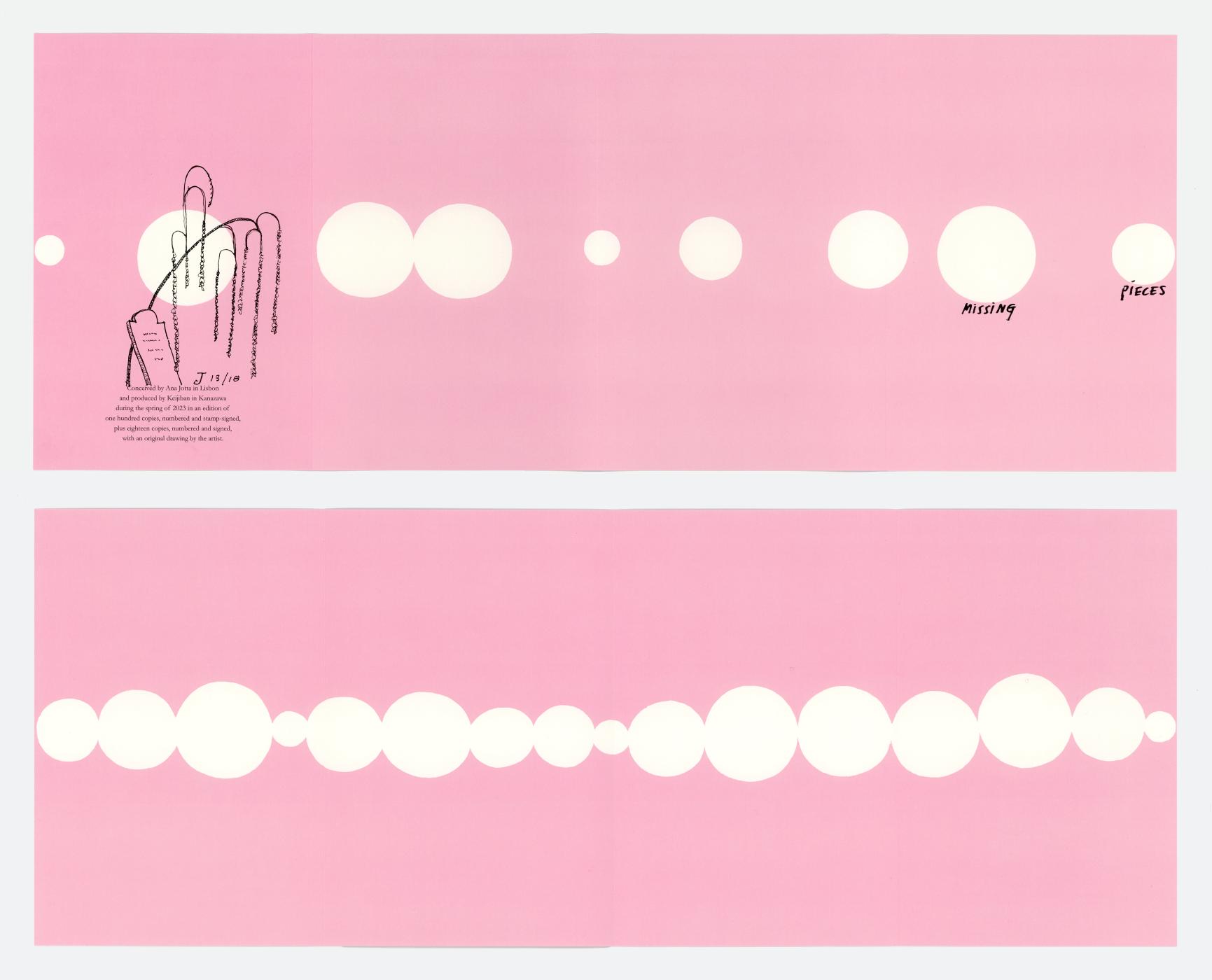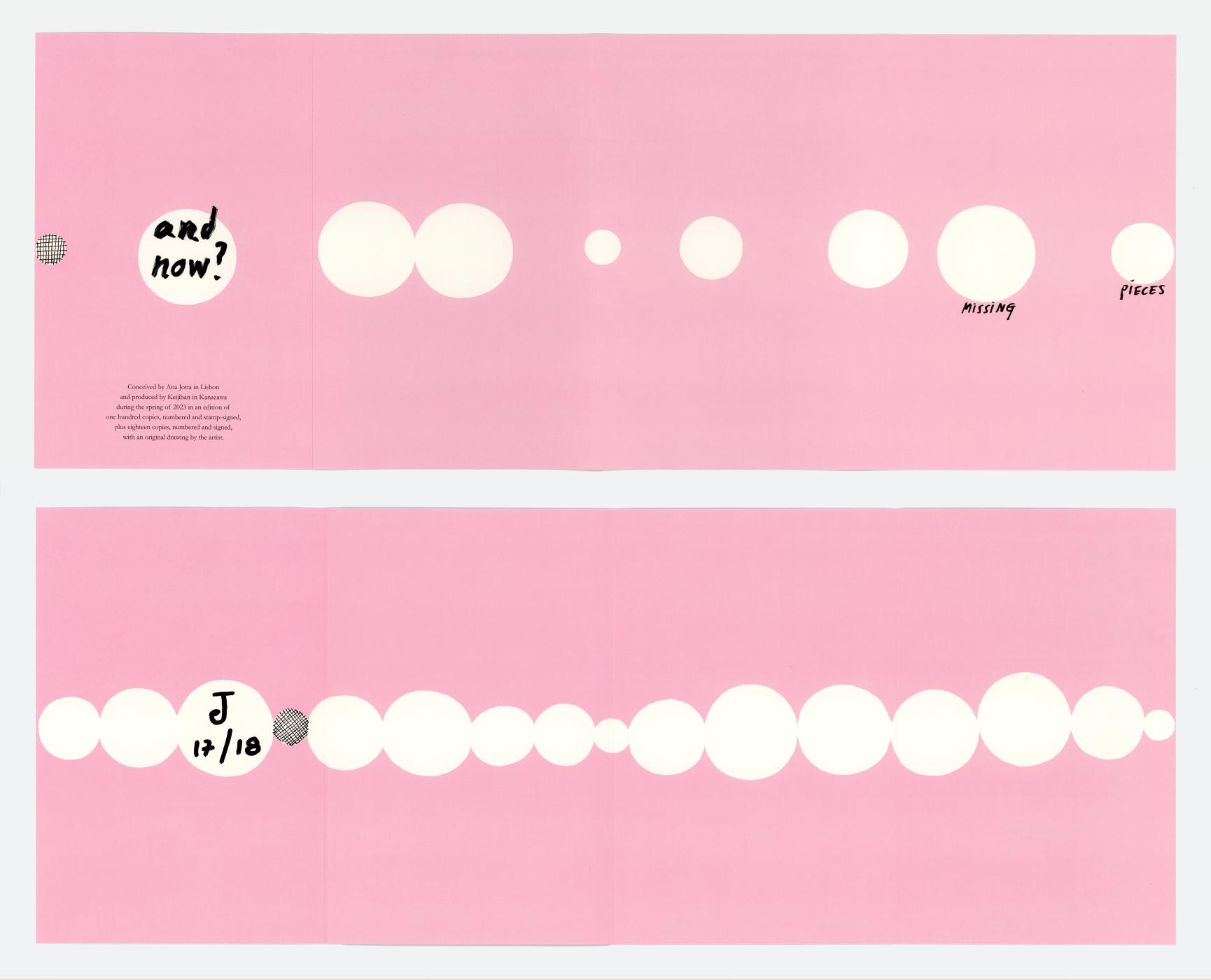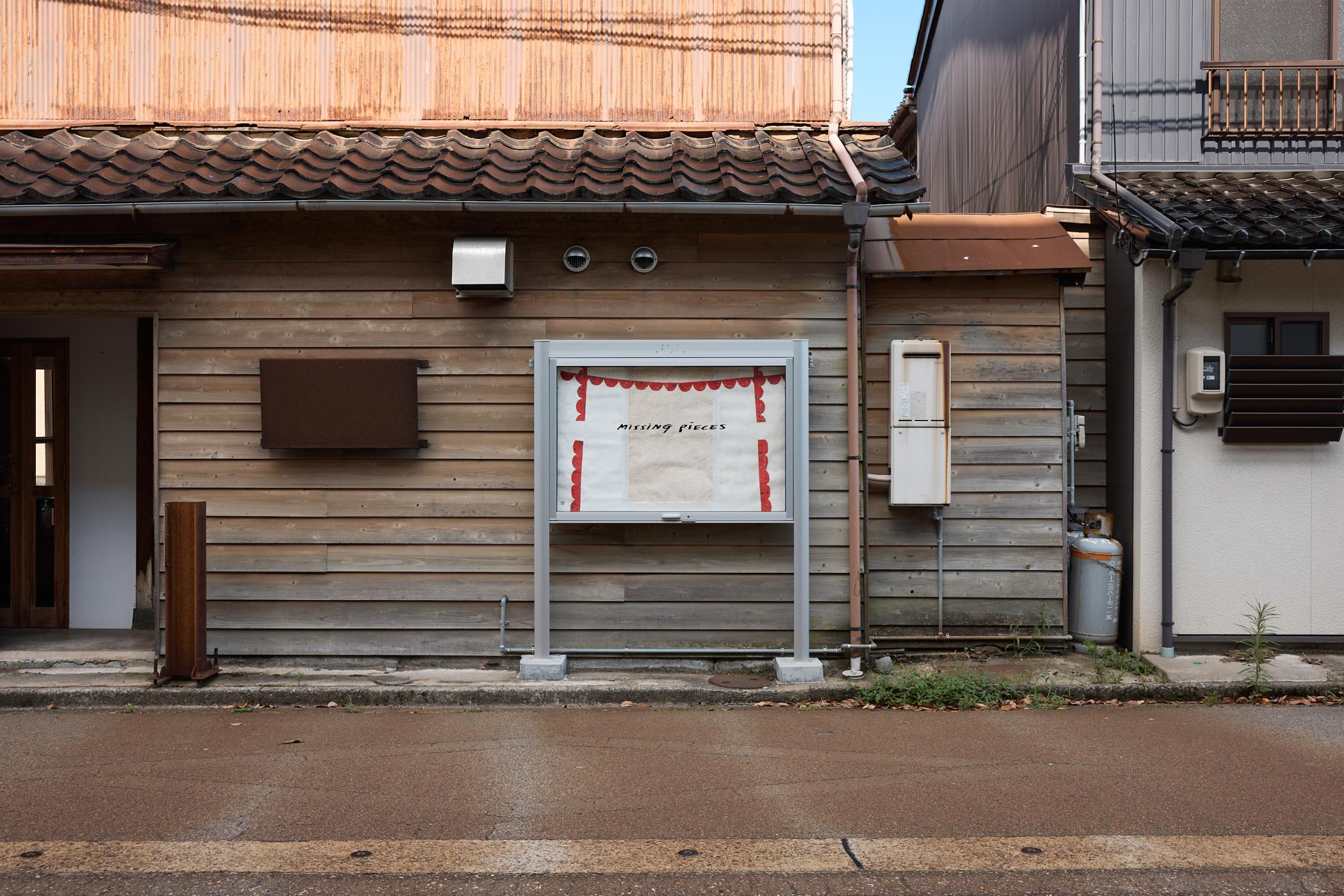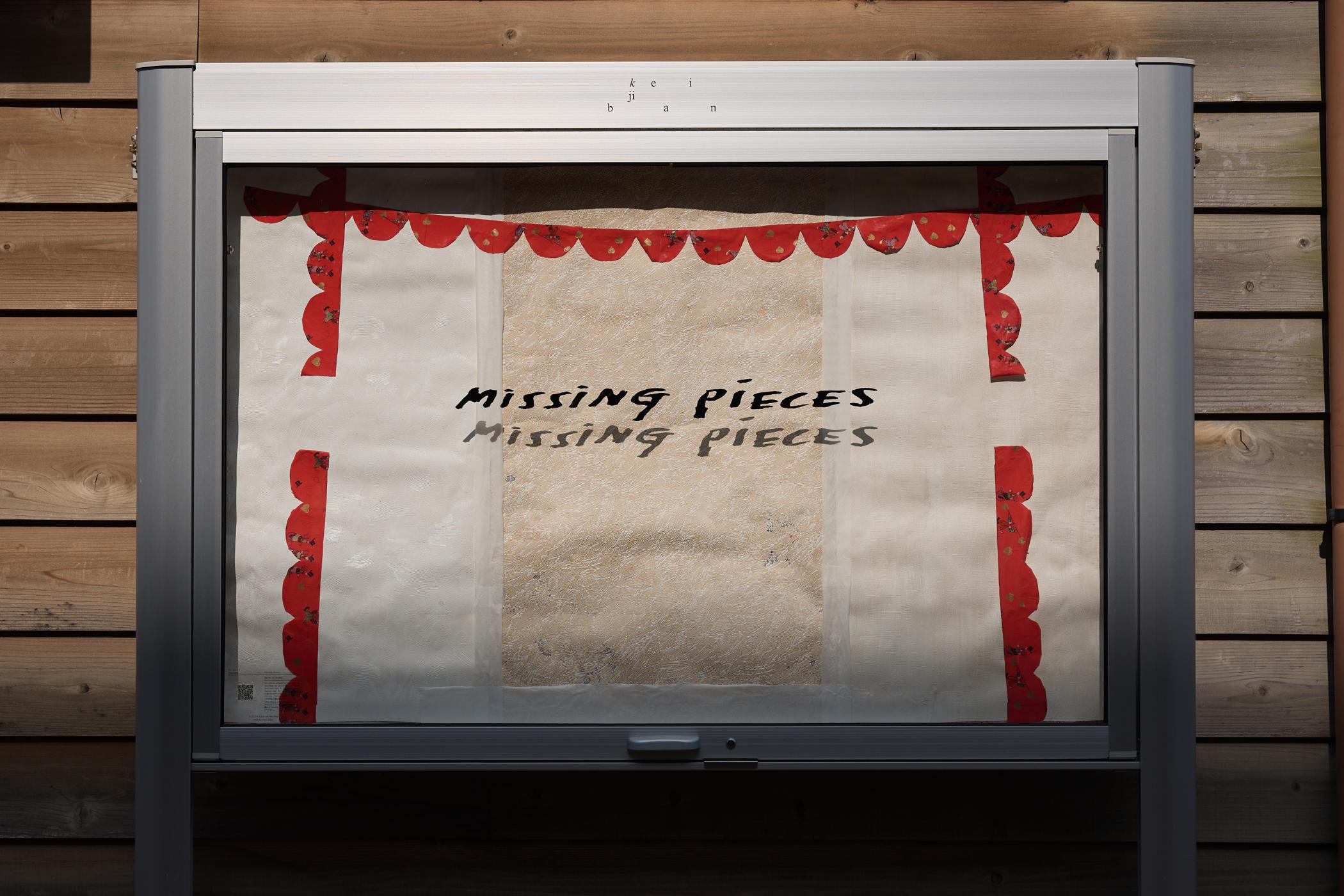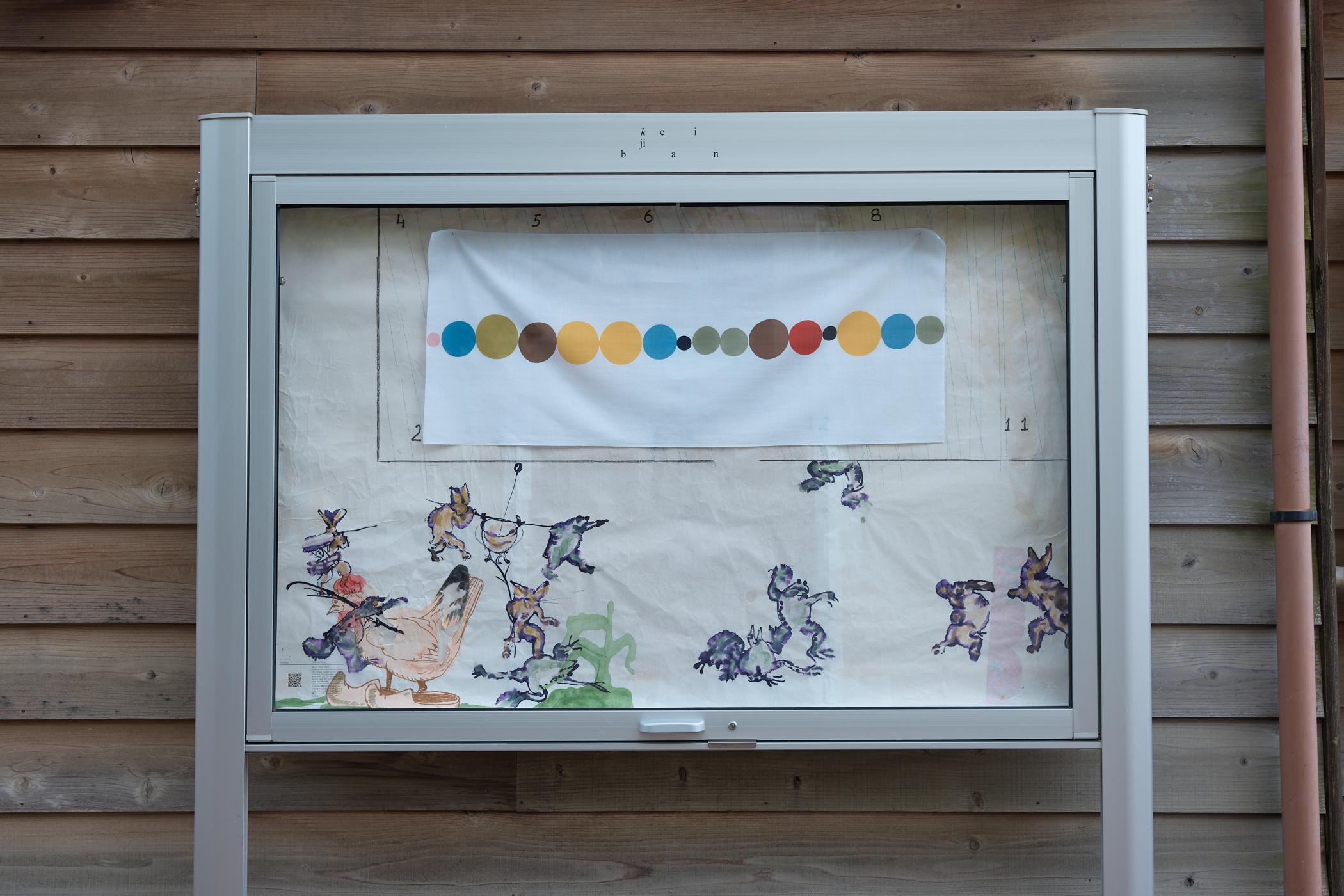Ana Jotta
Missing Pieces (Limited edition)
2023
Hand-dyed tenugui and leporello sleeve
Unfolded: 90 x 37 and 60.3 x 23 cm
Folded: 12 x 22.5 and 15.3 x 23 cm
Edition of 18 copies numbered and signed, including an original work by the artist
Regular edition available here
A tenugui (手拭い) is a Japanese traditional cloth made from cotton. Although te (手) means “hand” and nugui (拭い) means “wiping,” it is much more than just a hand towel. Since the eighth century at least, it has been used as a washcloth, dishcloth, headband, protective wrapping, or decorative item, among many other uses. Its unhemmed edges allow it to dry fast, and to be torn for use as a bandage, for example.
This tenugui was hand-dyed using the chūsen method, in which the color soaks into the cloth in such a way that the pattern appears clearly on both sides, unlike in modern printing techniques. Furthermore, it was made following a specific and delicate process called hosokawa-zome, in which two colors can be applied side by side or on top of one another without their blending. The cloth is dyed twice, and washed and dried in between. Since the drying causes the cloth and its first pattern to shift, the second layer of color overlaps in slightly unexpected ways. This feature highlights the skills of the artisan and makes each item unique.
Missing pieces is a work of illusion, in which a seemingly innocent decorative pattern lies at the center of an elaborate device made of reversible paper and textile. In line with Loves me, Loves me not…, her previous tenugui edition for Keijiban, Ana Jotta reveals the properties of the dying techniques in this new work. The colorful garland was indeed dyed in two phases, so that the various tints touch, but do not bleed into each other. The leporello sleeve alludes to the first stage of production, in which half of the discs are still missing. Also, the garland is somehow reversed on the paper sleeve, thereby constituting a negative of the tenugui. The variety of colors make way for white bubbles or, more likely, empty stages that allow the artist – or anyone else – to let their imagination run free.














